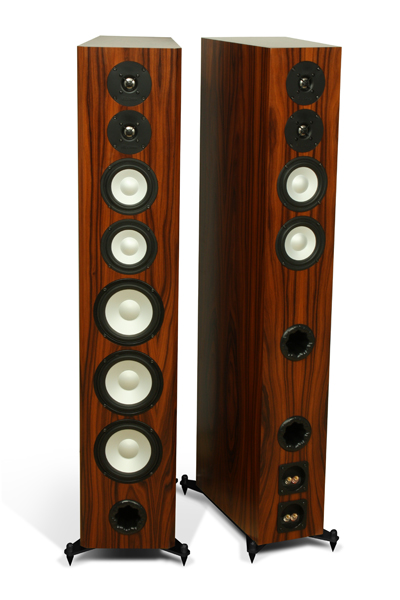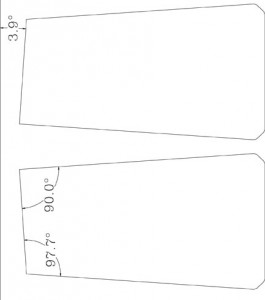
The Angled Back on the LFR Speaker
Another thing has had my curiousity piqued about the LFR1100 omnidirectional speaker . . . what's with the angled backs? Granted, the angle is slight, but the rest of our speakers have straight backs. What gives?
I tracked (okay, hunted) Andrew Welker down and asked him the question. His reply:
Well, basically any sound coming from the back of the speakers is going to reach the listening position as a reflection of some sort. (The front section, by contrast, has a high proportion of direct signal pointing directly at the listening area). So we're relying on reflections off boundaries for the sound, and for the most part boundaries mean a back wall.
If you imagine most people's home theater set up, what would be between the two speakers in their home? Probably a TV, a credenza, an equipment rack, and so on. If, for example, you were to place your speakers without toeing them in at all, we have a situation: the signal is firing directly at the rear wall, and will create reflections bunched up between the two speakers where the TV, credenza or whatever may be.

By angling the back, even if you have the fronts set up firing straight ahead, it's forcing the reflections to fire to the left on the left speaker, or to the right on the right speaker, instead of bunching up between the two speakers. By spreading out the reflections in terms of width, we get a larger, more open soundstage from which to work. And after all, that's one of the main reasons we have drivers on the back of the speaker to begin with.
Although we're not the first to do it, it is still fairly atypical in speakers, and a first for Axiom's line up.
I hope that helped you as much as it helped me! Do you have other questions about the design and engineering of the LFR1100s? Post them in the comments below!



 The Angled Back on the LFR Speaker
The Angled Back on the LFR Speaker

